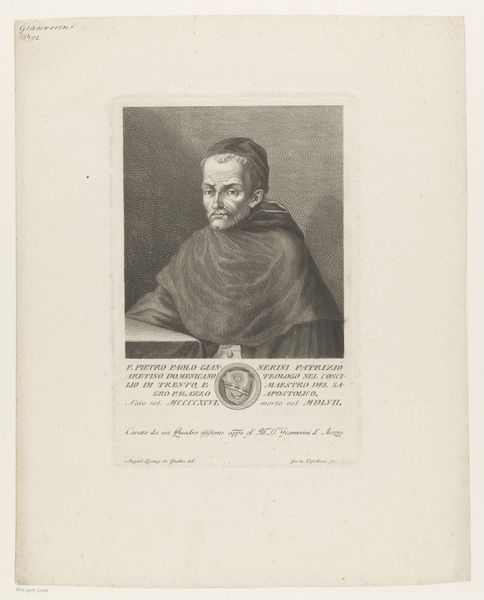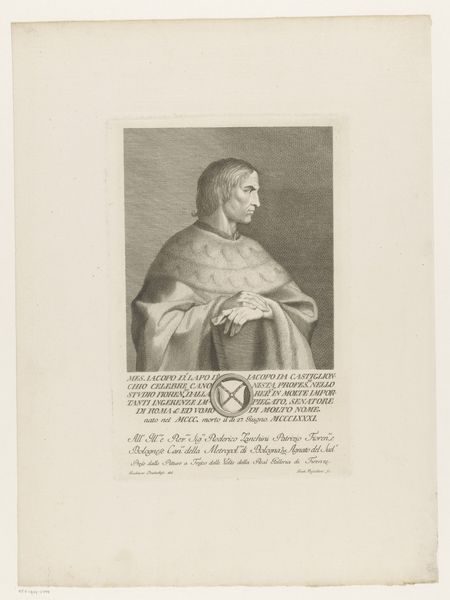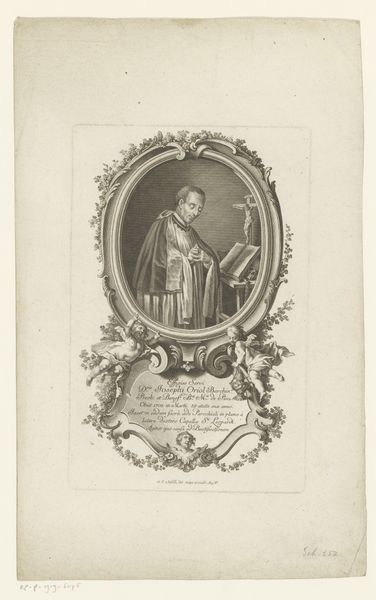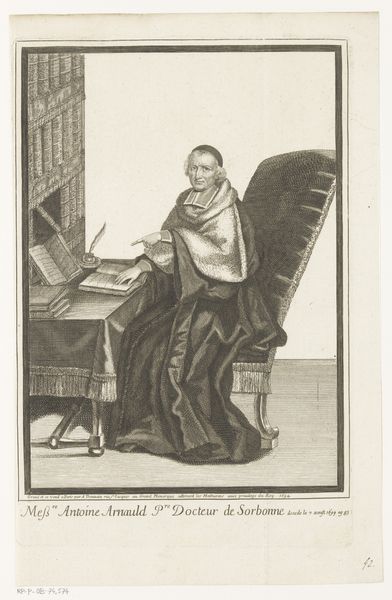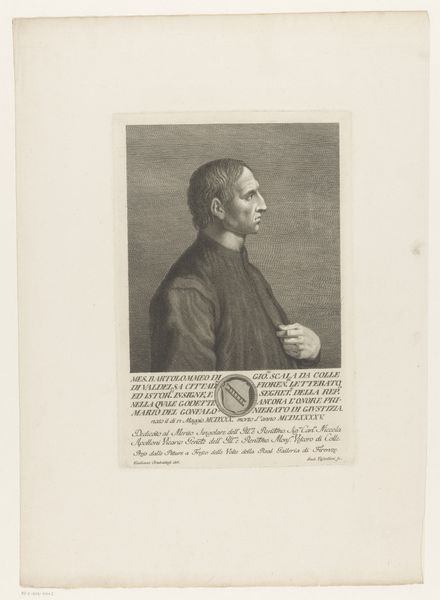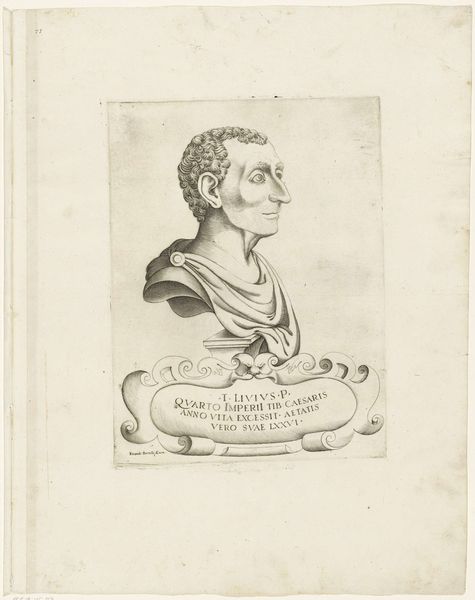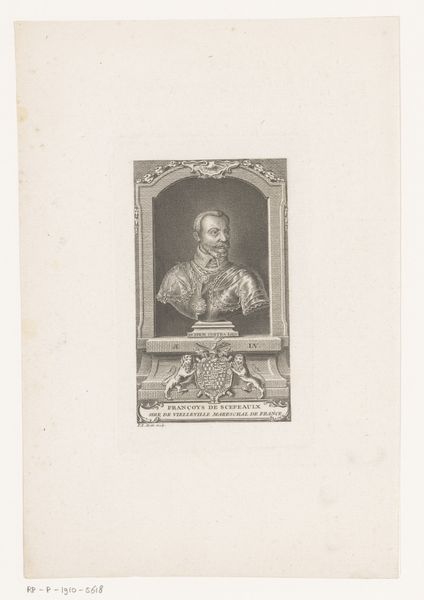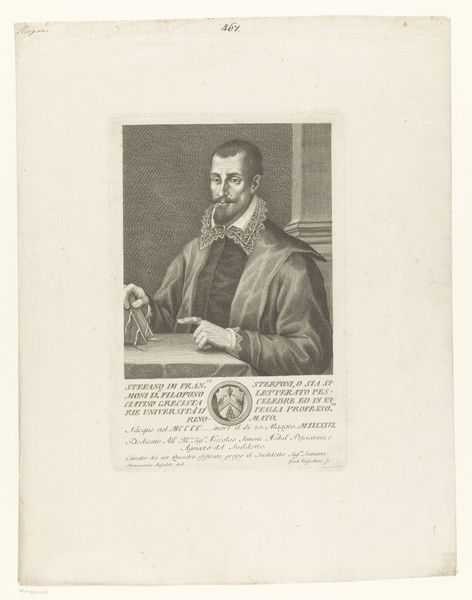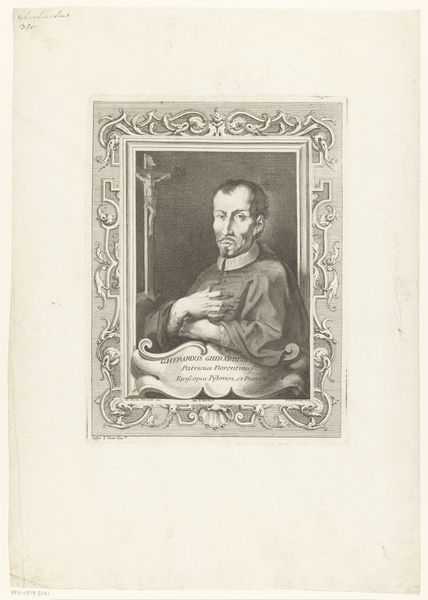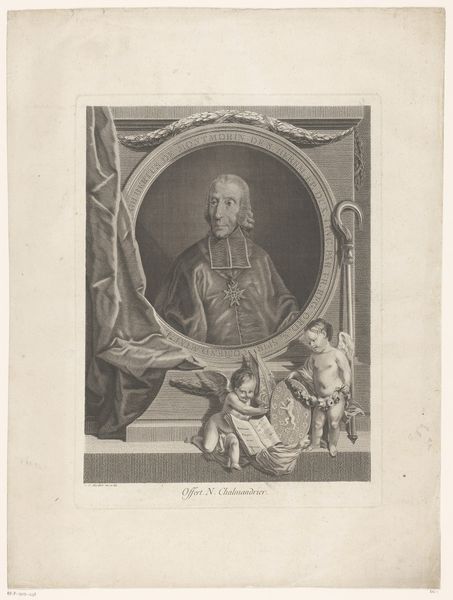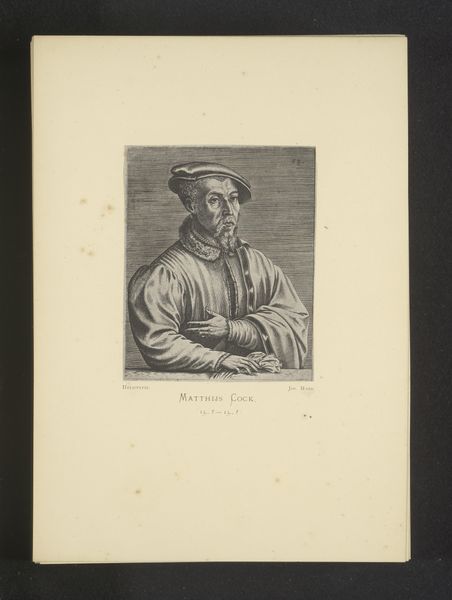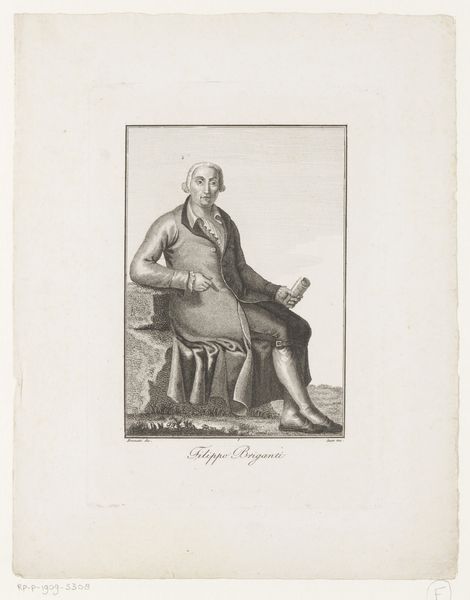
print, engraving
#
portrait
#
neoclacissism
# print
#
old engraving style
#
history-painting
#
academic-art
#
engraving
Dimensions: height 228 mm, width 155 mm
Copyright: Rijks Museum: Open Domain
Editor: This is "Portret van de abt van San Clemente," or Portrait of the Abbot of San Clemente, a 19th-century engraving by Monogrammist R. I find it quite austere, almost severe. What do you see in this piece? Curator: Beyond the immediate visual of a clergyman in his study, I see a reflection of power structures embedded in the Church and its visual representation. The starkness you mention, the formality of the portrait—these aren't just aesthetic choices. How might the very *act* of portraying a religious leader in this way, with symbols of learning and authority surrounding him, reinforce his societal position? Editor: So, it's less about the individual and more about what he represents? Curator: Precisely! Consider the historical context: 19th-century Europe was grappling with revolutions and social upheaval. How did institutions like the Church use art to reassert their dominance, to present an image of unshakeable stability and knowledge? Look at his gaze; where does it direct? What expectations were placed on such leaders during this era, and how are they reinforced visually? Editor: I see, the portrait is like a statement. The composition, with him framed by books and symbols of his office, seems to deliberately project an image of power and erudition, almost to suppress dissent. Curator: Exactly. And how does this "statement" contrast with contemporary images or concepts of religious figures or leaders in general? Are the power dynamics still relevant, even if the visual language has evolved? Editor: Thinking about it that way changes everything! I initially just saw an old portrait, but now I recognize that it is loaded with intentional signifiers about status and control, prompting us to consider its ongoing effects on contemporary social dynamics. Curator: It’s crucial to always ask ourselves who is being represented, by whom, and for what purpose. This lens allows us to critically examine not just the art, but also the larger societal narratives that these images perpetuate.
Comments
No comments
Be the first to comment and join the conversation on the ultimate creative platform.
